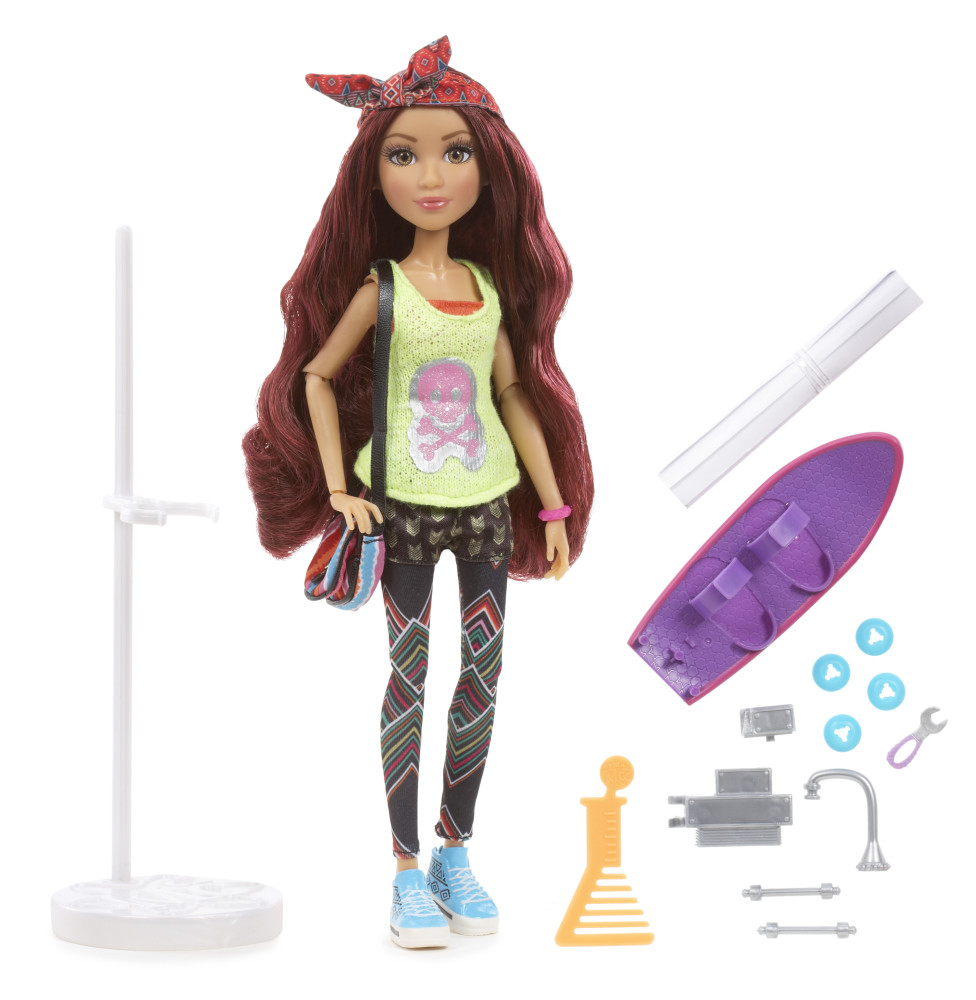By Heidi Stevens
Chicago Tribune.
When Isaac Larian was a civil engineering student at California Polytechnic State University in the late 1970s, he had one female classmate.
“Frankly, she was the smartest one,” Larian told me. “When I had issues and questions, I would go to her.”
Larian is now the CEO of MGA Entertainment, the company behind such brands as Little Tikes, Lalaloopsy and Bratz, and he’s channeling his undergrad experience into a new line of dolls, hoping they’ll inspire young girls to pursue careers in science, technology, engineering and math.
“Most dolls are promoting princesses and ponies,” he said. “If we can get girls at a young age, between 6 and 10, excited about STEM, they will feel more comfortable later on taking engineering and science and math courses.
“My hope is that the next CEO of Apple or Google or another big tech company is a female,” he said. “Not a man.”
I forgive him for the Bratz dolls.
After consulting with several scientists and a former CIA agent, Larian and his company launched the Project Mc2 line of four dolls, each of whom comes with an experiment kit that uses common kitchen supplies and ingredients so they can be tweaked and conducted over and over: an erupting volcano, a build-your-own lava lamp, a skateboard to construct, a glow stick necklace to create.
“We wanted to make sure the experiments were as real as possible,” Larian said. “We didn’t just want to make a doll wearing a plastic lab coat and saying, ‘I’m going to be an engineer!'”
They’re not Barbies, in other words.
Project Mc2 captured the attention of Chelsea Clinton, who recently tweeted a link to the dolls’ website with a #NoCeilings hashtag, a reference to the Clinton Foundation project she works on to advance the full participation of girls and women globally.
Danica McKellar, Winnie from “The Wonder Years,” a mathematician and the author of a bunch of pro-math books, including “Girls Get Curves: Geometry Takes Shape”, is also on board. She stars in an accompanying Netflix original series called “Project Mc2,” which follows the four characters as they’re recruited to join a secret spy organization called NOV8 (“Innovate”).
The characters, like the dolls, are named McKeyla McAlister, Adrienne Attoms, Bryden Bandweth and Camryn Coyle. McKellar plays the spy organization’s intelligence chief.
The three-part series premiered Aug. 7.
“It would be amazing if we had a younger demographic look at these girls and realize, ‘I love these supersmart girls and I want to be like them,'” Shauna Phelan, the show’s executive producer, told the Associated Press.
Wouldn’t it, though?
Still. I know there are people who will see this line of dolls and think, “Why?”
Why can’t toys just be toys? Why can’t kids just be kids? Why can’t we give our girls Barbies and Bratz and Disney princesses and stop worrying about what sort of careers they’ll pursue?
I understand that.
I watch my son play with his Teenage Mutant Ninja Turtles, and I know that no one worries he’ll grow up wanting to live in a sewer in New York, working for a rat sansei.
We assume our boys will outgrow their childhood hobbies and not try to major in them. We assume career paths will occur to them in spite of their toys, not because of them.
Our girls deserve the same credit. Of course they do.
But we’re not raising our girls and boys in a world that shows them, yet, that women and men can do all the same jobs. We tell them, but we’re not showing them, particularly in the STEM fields.
Women make up 47 percent of the total workforce in the United States, but female engineers remain rare, just 15 percent of chemical engineers, 12 percent of civil engineers and 8 percent of electrical and electronics engineers are women, according to the National Girls Collaborative Project.
Why should we care?
For starters, women in STEM jobs earn 33 percent more money than women in non-STEM jobs, according to the White House’s Office of Science and Technology Policy.
“And STEM careers offer women the opportunity to engage in some of the most exciting realms of discovery and technological innovation,” reads a statement on the White House website. “Increasing opportunities for women in these fields is an important step towards realizing greater economic success and equality for women across the board.”
Speaking of boards, we could use more women on those, too. Seventy percent of the privately funded technology companies in the United States have all-male boards of directors, according to the Choose Possibility Project, a group that works to elevate more women to power positions within tech fields.
The global outlook is no better: The United Nations estimates that 200 million fewer women than men worldwide have access to the Internet. By 2016 they estimate that number will reach 350 million.
So we hand our girls dolls that do science experiments instead of hair, who hang out in a lab instead of a spa, who create mini volcanoes instead of mini muffins.
Because ideally it’s about balance. Ideally we tell and show our girls that they can do it all _ bake, shop, primp and rock an engineering degree, if they want to.
We’re getting there. Women are earning college degrees and graduate degrees in record numbers. We’re increasing our earning power and quietly knocking down barriers left and right, possibly even, next year, the one that stands metaphorically in front of the White House.
Meanwhile, it doesn’t hurt to keep reminding our daughters that girls are built for math and science and whatever other pursuits that light up their worlds.
Even while they’re playing.














































































































































































































































































































































































